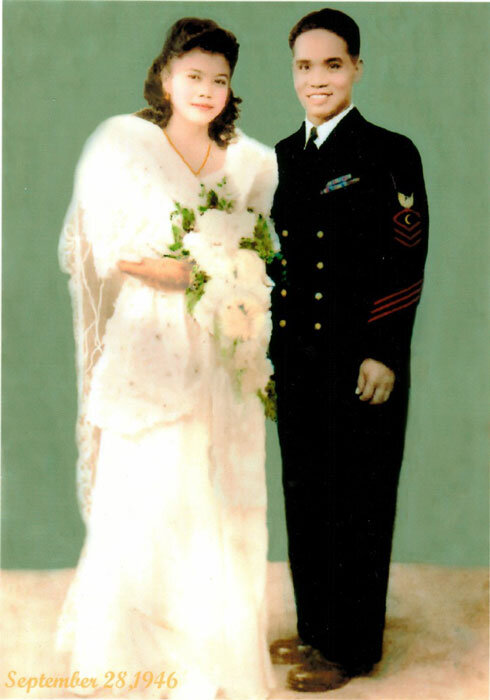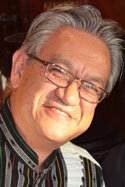Puyungan’s Legacy
/Chief Petty Officer Ignacio Olosan
According to existing documents, Puyungan was born on August 20, 1909. As a boy, he must have been in loincloth playing and doing the bag-bagto (a game played by Igorot boys that involved throwing stones to their opponents across the river while chanting) along a stretch of the Chico River.
The Halsema Road (connecting Baguio City and Trinidad to the hinterlands) only opened in 1930; so a teenage Puyungan had to walk barefoot for days across mountains to reach La Trinidad in Benguet. The trip now takes only around five hours of leisurely drive along cemented and asphalted roads. The roads used to be muddy and bumpy, skirting deep precipices on the sides of the road and took a whole bus-ride day. Puyungan took the trek because he was advised to study agriculture at the Mountain State Agricultural College.
Several years before the Japanese Occupation, he saw a poster on a bulletin board saying, “America wants you” and “Join the US Navy and see the world.” He then told his uncle that he wanted to join the US Navy.
“Why would you want to do that?” his uncle said. “You will earn the same as a farmer here.” At the time a peso equaled a dollar.
“But I want to see the world,” he replied.
Ignacio and a shipmate
Puyungan walked 15 miles from La Trinidad to Camp John Hay in Baguio City (it would have taken him less than two hours then) to enlist in the US Navy. He was accepted. Years later, he would be in Pearl Harbor when it was bombed, ushering WWII in the Pacific.
He was on R&R inland when it happened.
“We heard the thumps but we were not bothered at first,” he said. “Minutes later, we heard planes roaring over us. We thought they were ours doing unscheduled exercises. Then we heard sirens blaring. Military jeeps screeched up and down the roads. From loud speakers, we heard ‘Hurry back to your stations. We are under attack.’”
“We scrambled and commandeered whatever vehicles were available in our rush to the shore. To my chagrin, however, my ship (USS Argon) was already on fire like the others. I just found myself helping to fish out those who had jumped from the ships and able to swim to the shore. One of my bunkmates was covered all over with soot, panting, close to losing his breath, barely making it to the shore.
Ignacio and a friend
“I thought that the Japanese were landing on the Islands. If they did, I thought they would have easily defeated us as they already succeeded in confusing us. I mean, I did not even know what else to do because there was no command for what we should be doing. Everything was so confusing.”
As the war wore on, Puyungan became the personal chef of Admiral Chester Nimitz who featured in the Battle of Midway that defeated the Japanese fleet in what is described as "the most stunning and decisive blow in the history of naval warfare." The Japanese never recovered and eventually surrendered to end the war in the Pacific. Puyungan’s voice carried a timbre of pride in having been there, every time he retold specifics of that battle.
After the war, Puyungan met and married Francisca “Pansing” Hipona Patacsil. Pansing had just been orphaned along with her nine younger brothers and sisters. Being the eldest, she swore on her mother’s deathbed that she would take care of her younger siblings.
Pansing was then helping her aunt who was a labandera (laundry woman) in Paco, Manila. Among the clothes they were laundering were uniforms of members of the US military forces. One day, a Filipino-looking person came to pick up an officer’s uniform. He was only the height of Pansing’s chin. She thought that the man was just the atsoy (domestic help) of an American (presumably a white man). She did not think of the man anymore after he left.
After several nights, however, she was surprised when the “atsoy” knocked on their door, stood there in the resplendent chief petty officer’s Navy uniform, asking to be asked in for a visit. She could not believe that the “atsoy,” a Filipino, could be with the US Navy, and be an officer at that.
After Chief Petty Officer Ignacio “Puyungan” Olosan left, Pansing’s aunt said, “He told me he wants to marry you.”
“But I don’t want him,” Pansing said. “He is old (he was older by 14 years) and he is short.”
“Don’t be foolish,” the aunt said. “He is with the US Navy. He can support you and how do you think you can support your brothers and sisters with your situation?”
The following week, Puyungan invited her to an officers’ ball. She came with her cousins as chaperones. At the entrance to the ball room, Pansing was amazed that Americans, white and black Navy men, were saluting the short Igorot Filipino Chief Petty Officer Ignacio Olosan. She couldn’t believe it, but she felt proud.
It was during one of the slow dances that he told her that he wanted to marry her. She said “I promised my mother that I will support my brothers and sisters.”
He said, “We will support them together.”
At the time and when he retired, Puyungan was receiving $200 a month.
And so, on September 18, 1946, Pansing became Mrs. Ignacio Olosan. He bought a house in an 18,000-square-meter lot in Baguio City. There, they had eight daughters and a son. They lived in the compound, now called the Olosan Estate, along with Pansing’s siblings and their children.
Ignacio "Puyungan" and Pansing Olosan on their wedding day.
After retirement, when the older children began going to college, Puyungan decided to go back to the United States. “My pension won’t be enough anymore with the tuition fees they are going to have,” he said. He left Pansing in Baguio to take care of their children.
Thus, the once-Chief Petty Officer Ignacio Olosan took odd jobs as a bus boy, waiter, cold-storage worker, among others in the US. He only knew how to cook and supervise cooks while in the US Navy. He sent his hard-earned money for the tuition fees of his children who lived a life of relative luxury in the Philippines not knowing how much their dad had to sacrifice for their life to be uplifted.
Painful Realization
When Manang Angie arrived in San Francisco in 1970, she cried when she realized how heroic their dad really was, not only as a veteran, but also as a family man. “I shed profuse tears when I saw his room,” she recalled. “I never realized that it was so tiny and he had been staying there all alone for so many years. I had always imagined that, being in the United States, he would be living here more luxuriously.”
The Olosan family
Her dad, Ignacio Olosan, had just fetched her from the Philippines right after her graduation from St. Louis University in Baguio City. She would be the first of nine siblings to come to the US, one after another, after finishing their studies in the Philippines.
“The motel room must have been just 9 feet by 12 feet or even smaller. It just had a single bed and a table where he cooked, ate, ironed his clothes and must have written all those letters he sent back home,” Manang Angie continued, her voice cracking with emotion. “As soon as we arrived, he made me sit on the only chair in the room and made a phone call. To whoever, he was talking to, he was almost pleading.”
After the phone call and a few minutes of rest, her father brought her to the house of one of her aunts in San Francisco. There she would stay until she could settle in the United States. That first night, though tired from the long flight, she found it hard to sleep. With tears wetting the pillow, she kept muttering to herself, “As soon as I get a job, you are going home, Dad. I promise to fulfill your wish for me to help my sisters finish their schooling before they also come here.”
Although a medical technology graduate, in the Philippines but without US experience, landing a job as a civilian became a challenge for Manang Angie. She ended up joining the US Army. “There [in the Army], I was able to hone my med tech knowledge; at the same time I was getting paid, I definitely had a job. I sent my first whole pay check to Mommy, a simple pittance tribute for her sacrifices in taking care of us while dad was breaking his back here in the US. With my succeeding paychecks, I prepared for Dad’s return home while stabilizing myself here. Eventually I was able to tell him to finally really retire in Baguio with Mom and the rest of my sisters and brother.”
All Puyungan’s children and their families were eventually able to settle in the US. He rejoined them here when he was already a septuagenarian. Three of his offspring, including Manang Angie, became US military veterans. All the rest are nurses or are serving in the medical or related fields. Two of his sons-in-law are also veterans. When Puyungan died on Feb. 11, 2001, four of his pallbearers were his grandsons who were with the US Navy. One of them is still active, one has retired. Another was with the Marines and one is still with the Reserves. Three of his granddaughters-in-law were or are still serving with the military; a grandson-in-law is with the Army.
From Puyungan and Pransing’s nine children, they now have 28 grandchildren, 49 great grandchildren, and four great great grandchildren.
For one who walked barefoot from the mountains of Bontoc to La Trinidad, Benguet, and eventually joined the United States Navy, Puyungan’s legacy lives on. We salute him for breaking the glass ceiling within the US military. During his time it was difficult for Filipinos to rise beyond being an E2; but he climbed the ranks to become Chief Petty Officer Ignacio Olosan, a proud Igorot and Filipino, and a devoted family man.
Rudy D. Liporada is a columnist for the Asian Journal - San Diego. As an OFW, he used to teach feature writing in Zambia, Africa.







